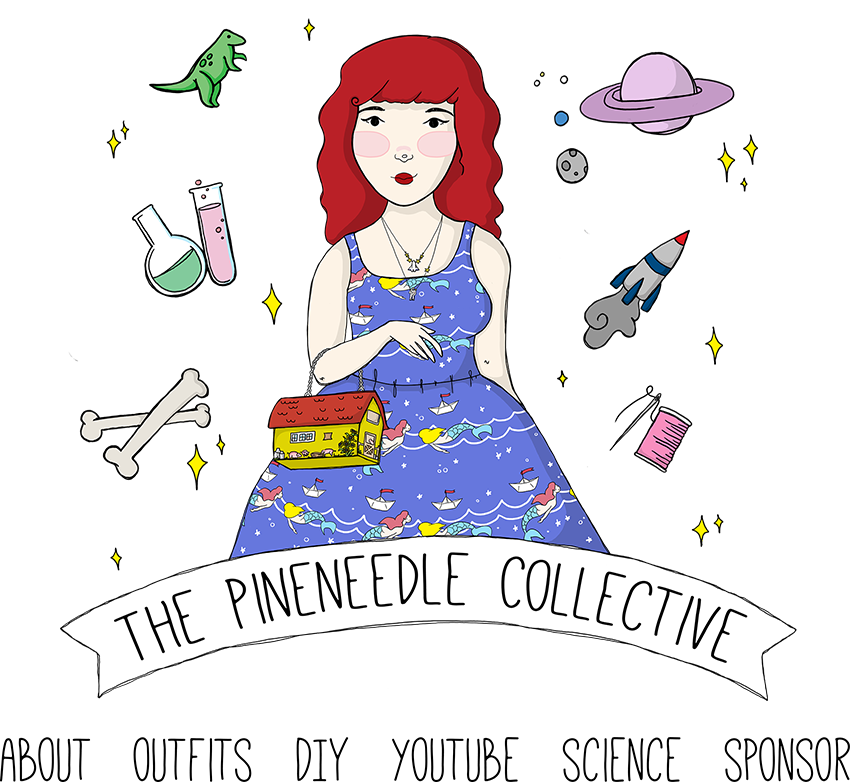|
Yep, it happened again, I murdered another plush toy to make a cute bag out of it.
Inappropriate-guilty-feelings aside, I am actually so happy with this panda bear backpack. And I bought him for $3 from an op shop (yes, it's a male panda bear), so at least there were no sentimental attachments there. If you missed it the first time around, I wrote up some instructions on how to make a DIY plush toy bag here. The only difference with this one is that I added two straps (thrifted belts) instead of one!
My pretty floral blouse & red skirt are both from Sheinside! Many thanks to Sheinside for providing them to style!
blouse - c/o Sheinside
skirt - c/o Sheinside
socks - Shop With Romi
shoes - c/o Yes Walker
bag - DIY
hat - c/o Wholesale
If you're a casual reader of science stories (or have joined IFLS on facebook) you may have heard people talking about "blinding", or that an experiment was not reliable because it wasn't "blinded" or even "double-blinded". You may have thought, what on earth does "blinding" mean and more importantly, how on earth does anyone know what's happening if no one can see what's going on??
Well "blinding" is one of the most important concepts to science. Human beings, clever as we may be, are unfortunately very susceptible to something called bias - that is, seeing what you want to believe.
That's where the story of Clever Hans comes in. Clever Hans was the name of a horse who lived in the early 1900s. His owner claimed that Clever Hans could not only count, but could also do complex maths problems and understand German. His owner would ask him questions, and Clever Hans would answer by tapping his foot. His owner paraded his horse around Germany, showing off his apparent skills.
Clever Hans was investigated by veterinarians and teachers. They removed the audience to make sure Clever Hans wasn't getting cues from them, and they even used different questioners (other than the horse's owner) to rule out the possibility of fraud.
Then they made a realisation - if the person asking the questions knew the answer to the questions, then Clever Hans would get the right answer 89% of the time. But if the person asking the questions didn't know the answers themselves, Clever Hans was only right 6% of the time.It seemed that Clever Hans was clever in a way, although he didn't know how to count or do maths - he had learnt to tap his foot whenever the questioner expected the horse to tap its foot. Take away the expectations of the questioner, and the horse had no idea. This was a very important observation for science and where the idea of "double blinding" comes from. Now scientists make sure, especially in fields where animals or humans are being measured, that not only does the participant not know what condition they are in, but the experimenter is also "blind" to the conditions of the experiment as well. Only at the end of the experiment, when all the tests have been done, are both the subject and experimenter allowed to know what was really going on. And that's your neat science fact of the day. p.s. I announced another giveaway earlier today! Enter here if you haven't already. Bloglovin' | Facebook | Twitter | Instagram | Chictopia | Lookbook | Tumblr |
Showing posts with label Shop With Romi. Show all posts
Showing posts with label Shop With Romi. Show all posts
Thursday 4 April 2013
Panda Bears and Flowers / Clever Hans
Monday 3 December 2012
90s Kitten
|
Meow! I've been listening to the Beastie Boys and the Pixies all day, as well as having a binge of looking up videos of cute animals on youtube and this is what subsequently happened to my outfit. Hey, I take inspiration from all around me.
wearing
dress -Vintage
socks - Shop with Romi
headband - c/o Shop with Romi
bag - c/o Oasap
shirt - c/o Oasap
shoes - Label shoes c/o Chictopia
clips - DIY
A fellow science-loving reader sent me this graphic the other day, and I couldn't resist posting it. The image on the left is of neurons in a mouse's brain and the image on the right is a simulated image of the universe. And they look pretty darn similar.
source: from here via Visual Complexity
Of course, there is some cherry-picking going on here - you could probably find many similar looking images and this is a nice example of how the human-brain seeks out patterns in random images and sees them as significant, but before I suck all the romance out of this image with my skepticism (or is it too late?), I thought that this image is nonetheless beautiful just for the fact that something on the scale of a few micrometres wide can take on the same form as something on the scale of billions of lightyears, and that you will never be able to truly perceive and wrap your minds around either size.
p.s. Go and say hi to my December sponsor Jessica from Jessica Who if you get the chance! If you're interested in being my XL featured sponsor in January, please click here! |
Subscribe to:
Posts (Atom)





.jpg)



.jpg)



